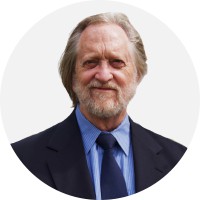The views expressed in our content reflect individual perspectives and do not represent the authoritative views of the Baha'i Faith.
Plato’s famous analogy of the Cave dramatizes how physical creation reflects the abstract “forms” or “ideas” of the spiritual plane of existence.
In this sense Plato designated the just or proper function of physical reality to be its ability to give metaphoric or symbolic form to metaphysical concepts—what the Baha’i writings call “divine attributes,” “spiritual qualities,” or the “names” of God.
Plato connects this process of striving to discover reality to his monotheistic belief when he describes how all these attributes or “forms” are emanations of one primary source, the Good.
For example, Socrates compares the Good to the sun, since the Good illuminates or makes understandable all other realities. In his introductory notes to chapter 23 of Book VI, translator and noted scholar Francis Macdonald Cornford clarifies what Plato’s notion of the Good represents:
In Greek “the Good” is normally synonymous with “Goodness itself.” This is the supreme Form or Essence manifested not only in the special kinds of moral goodness, Justice, Courage, etc., but throughout all Nature (for every living creature has its own “good”) and especially in the beautiful and harmonious order of the heavenly bodies … The knowledge of the Good, on which well-being depends, is now to include an understanding of the moral and physical order of the whole universe. As the object of a purpose attributed to a divine Reason operating in the world, this supreme Good makes the world intelligible, as a work of human craftsmanship becomes intelligible when we see the purpose it is designed to serve.
Socrates continues in the cave analogy to describe the process by which proximity to, or a vision of, the Good empowers and inspires the “guardian” or philosopher-king to return to the cave and lead the other prisoners out of bondage.
In terms of the individual, the return to the world of images and “bondage” might allude to the need to struggle for the transformation of our inner character. If we are to benefit from the guidance we can derive from mental and spiritual reflection about what is truly important or “real” in our lives, we have to employ our will to extricate our rational and spiritual faculties from our attachment to the illusory world of sensual delights and distractions—for example, the ease of the “good life.”
According to Plato, the justification of temporal reality resides in the very fabric of creation itself. He described the physical world as a divinely ordained teaching device, through which human beings can ascend from the depths of blindness to the heights of enlightenment by learning to discern the spiritual values and attributes reflected in the phenomenal world. From this perspective, there is no need to reject or disdain physical reality, so long as we utilize this physical existence to discern the spiritual attributes it manifests.
But implicit in this dramatic analogy is the value of a gradual relinquishing of the need for physical analogues as one learns spiritual lessons. So-called Platonic love, for example, is not so much a disregard for physical love as it is a process by which one ascends from the physical attraction and sexual expression of love to a recognition and appreciation of the spiritual attributes made apparent first in the physical beauty of the beloved, and then in the divine attributes and spiritual virtues of the beloved.
This transformation of love from one level to another occurs when one realizes that love is not a single state of being—the flick of a switch—but an organic process that necessarily progresses from stage to stage. In the dialogue titled The Symposium Socrates portrays this organic growth of love as a “ladder” where each rung represents an ever more expansive expression of love. One proceeds from the love of self, to the physical desire of another, to the love of the spiritual attributes in the other, to the appreciation of the attributes in all people, to the love of creation as a whole.
In the exact same way, the Baha’i teachings describe our growth as spiritual beings through a succession of stages, in which our souls learn to become increasingly aware and awake:
From the beginning to the end of his life man passes through certain periods, or stages, each of which is marked by certain conditions peculiar to itself. For instance, during the period of childhood his conditions and requirements are characteristic of that degree of intelligence and capacity. After a time he enters the period of youth, in which his former conditions and needs are superseded by new requirements applicable to the advance in his degree. His faculties of observation are broadened and deepened; his intelligent capacities are trained and awakened; the limitations and environment of childhood no longer restrict his energies and accomplishments. At last he passes out of the period of youth and enters the stage, or station, of maturity, which necessitates another transformation and corresponding advance in his sphere of life activity. New powers and perceptions clothe him, teaching and training commensurate with his progression occupy his mind, special bounties and bestowals descend in proportion to his increased capacities, and his former period of youth and its conditions will no longer satisfy his matured view and vision. – Abdu’l-Baha, The Promulgation of Universal Peace, p. 438.
The suckling babe passeth through various physical stages, growing and developing at every stage, until its body reacheth the age of maturity. Having arrived at this stage it acquireth the capacity to manifest spiritual and intellectual perfections. The lights of comprehension, intelligence and knowledge become perceptible in it and the powers of its soul unfold. – Abdu’l-Baha, Selections from the Writings of Abdu’l-Baha, p. 285.
From the Platonic point of view, evil or injustice in the phenomenal world, at least injustice as it is perpetrated by human beings, results from a lack of knowledge about the search for the “Good.” In the dialogue titled The Gorgias Socrates argues that no one does evil in full knowledge because to do evil is to perpetrate injustice, and to perpetrate injustice is ultimately to injure our own soul, not the soul of those whom we attempt to harm. He goes on to argue that no one would willingly and wittingly inflict misery on himself; therefore, he argues, the solution to injustice is to teach those who would do evil that the real victim of their iniquity is themselves.
You May Also Like
Comments

















contact with physical things, but we also have to know when it is time to
move onward and upward. The ascending and widening stages of
love is a good example!